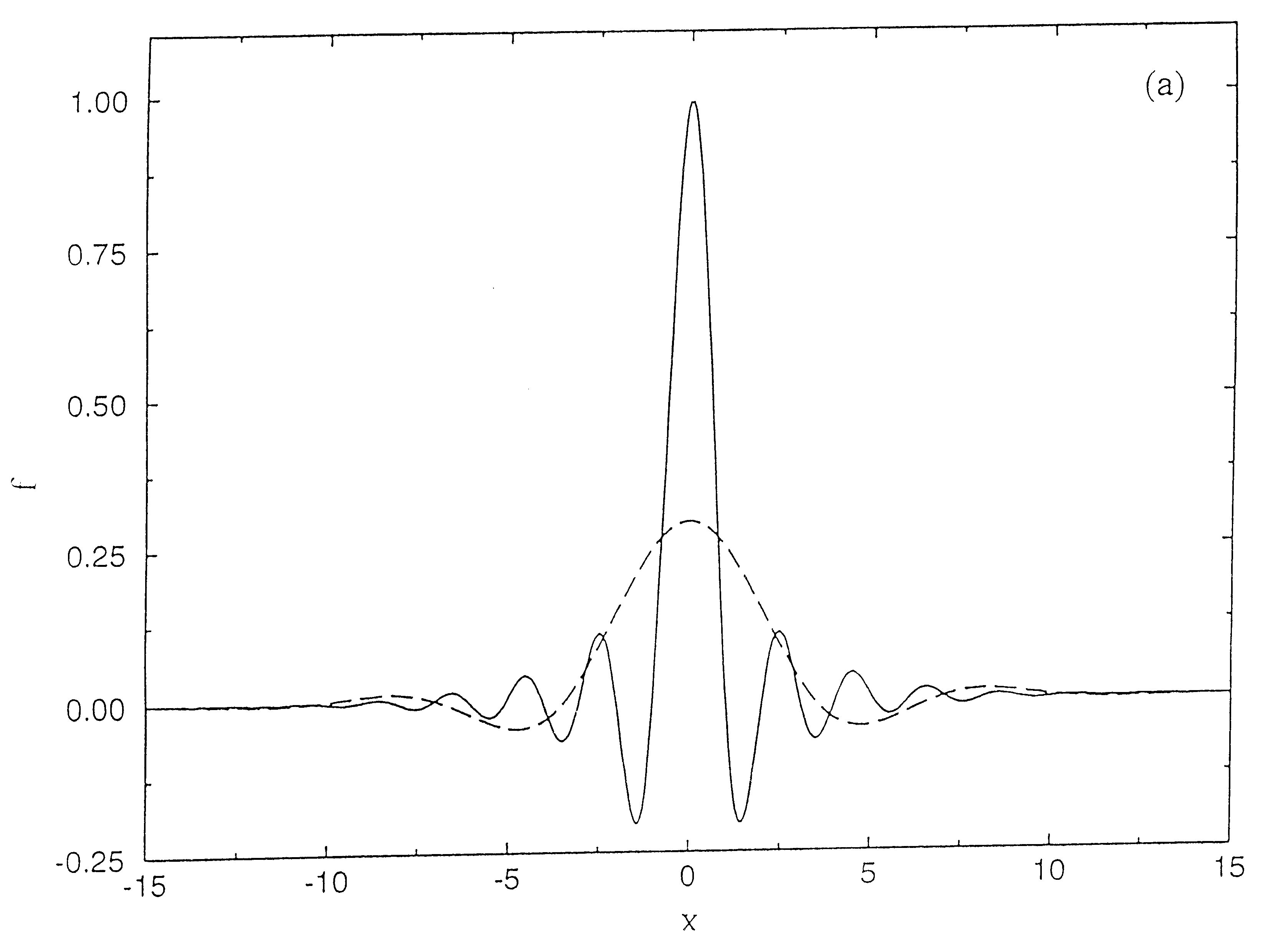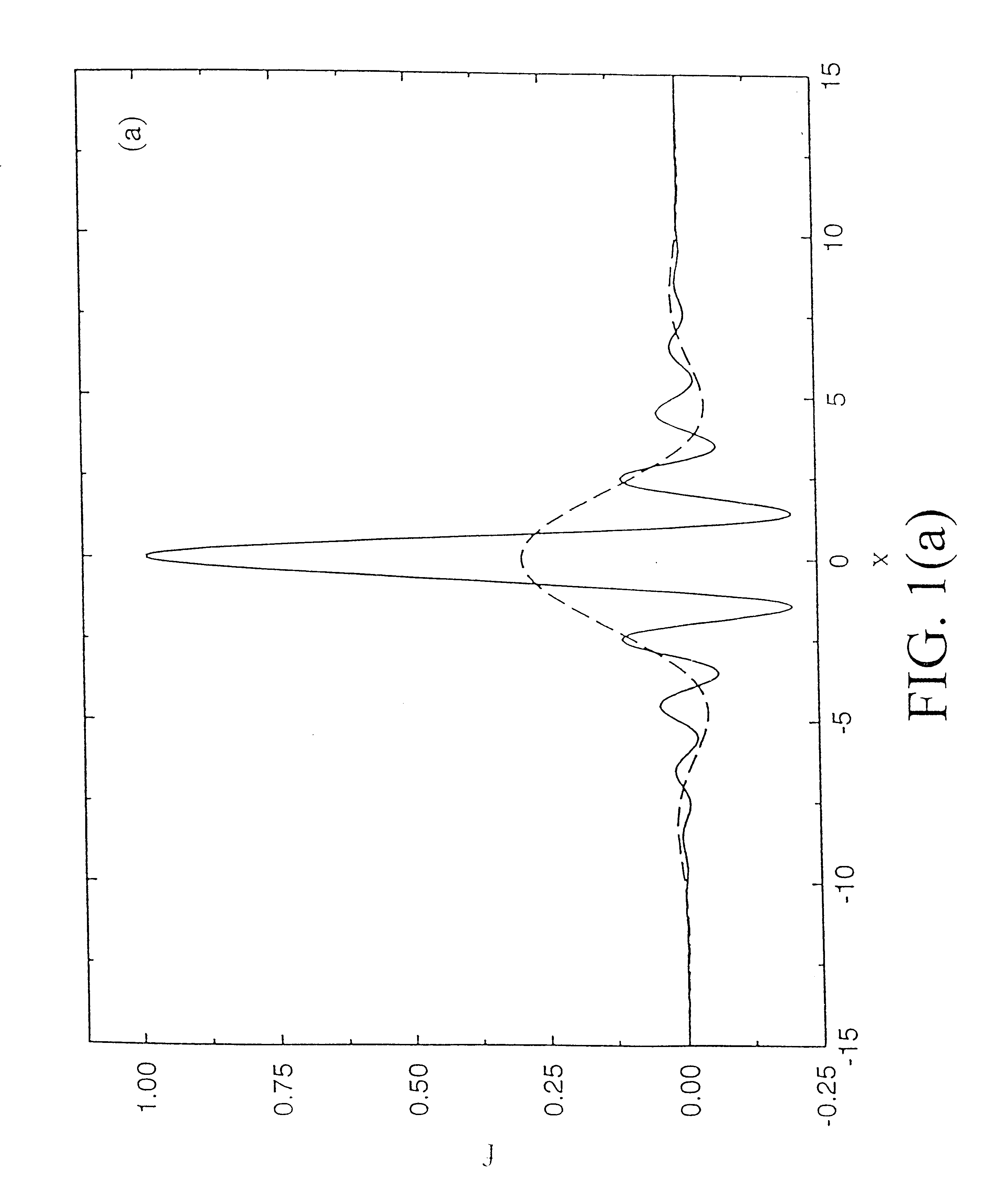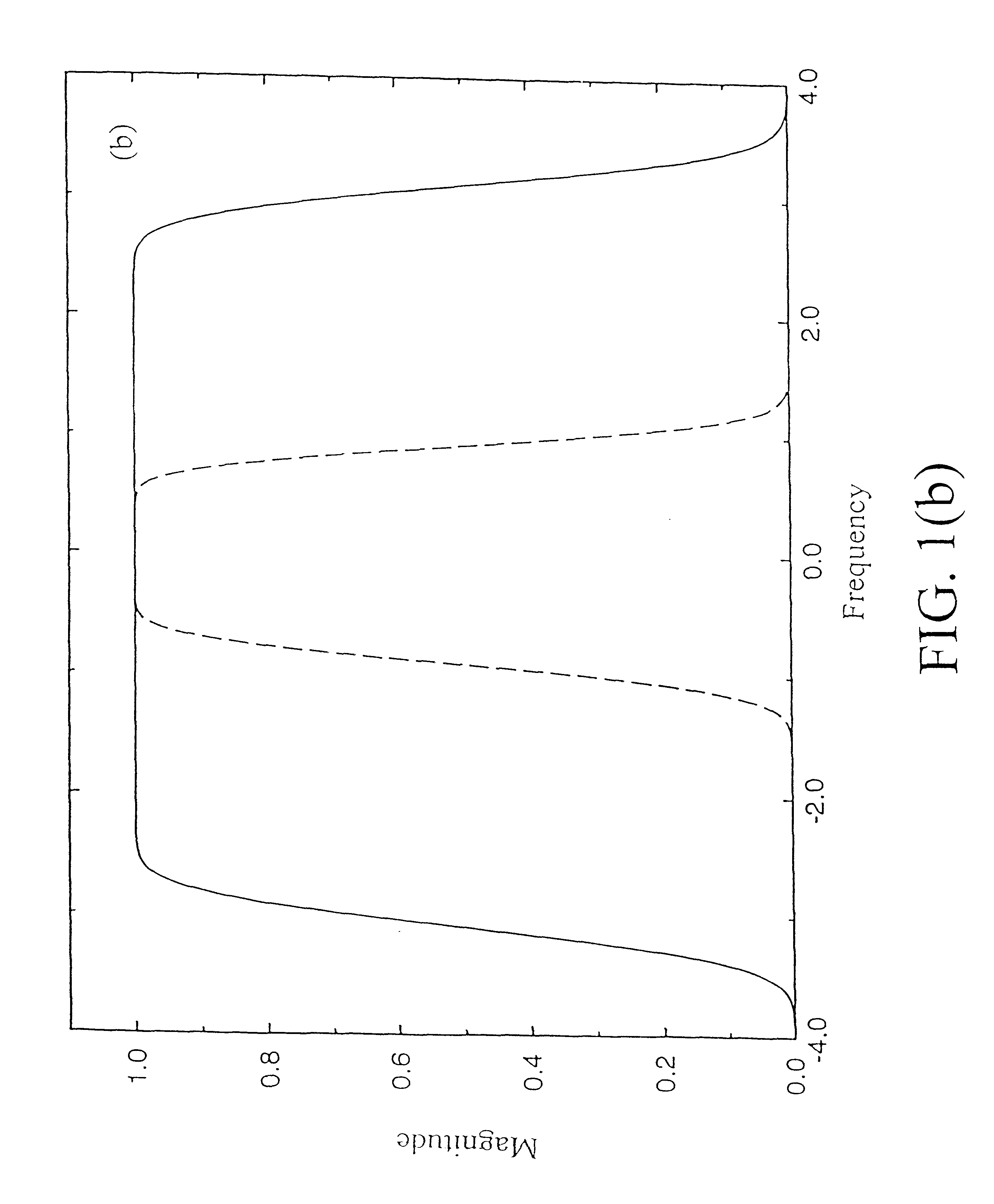Methods for performing DAF data filtering and padding
a filtering and padding technology, applied in image enhancement, image analysis, instruments, etc., can solve the problems of one or more limitations in the ability of the technique to enhance signals or images, construct or restore missing, lost data,
- Summary
- Abstract
- Description
- Claims
- Application Information
AI Technical Summary
Benefits of technology
Problems solved by technology
Method used
Image
Examples
case i
The first one is the extrapolation of ƒ(x)=sin(5πx / 128), to which noise has been added. The Hermite DAF parameters are M=6 for padding / extension and M=1 for smoothing in our numerical examples. The weight Wp, was taken as discussed above. The values at 220 evenly spaced grid points are input over the range [0,219], with 50% random noise added (ƒ=ƒ×[1+ random(−0.5,0.5)]. The continuation of the solid curve from points x220 to x256 shows the function without noise. We shall predict the remaining 36 points (excluding x256 because the function there must equal the function at x0) by the periodic extension algorithm presented in this disclosure. Because the original continuous function without noise is truly periodic, with period 256, this extension corresponds to filling the gap using noisy input data. The L∞ error and the signature for periodic extension are plotted with respect to σ / Δ in FIGS. 4(a) and 4(b) respectively. From FIG. 4(b), we see that at σ / Δ≈10.5, the transition from the...
case ii
We now consider a more challenging situation. It often happens in experiments that the boundary condition of the experimental signal is not periodic, and is unknown, in general. However, the signal is approximately band-limited (i.e., in the DAF class).
To test the algorithm for this case, we use the function given in Equation (15) as an example. FIG. 6(a) shows the function, with 20% random noise in the range (−7,10) (solid line). These noisy values are assumed known at only 220 grid points in this range. Also plotted in FIG. 6(a) are the true values of the function (dashed line) on the 36 points to be predicted. In our calculations, these are treated, of course, as unknown and are shown here only for reference. It is clearly seen that the original function is not periodic on the range of 256 grid points. We force the noisy function to be periodic by padding the values of the function on these last 36 points, using only the known, noisy 220 values to periodically surround the gap.
As...
numerical examples
Numerical experiments are preformed using the “Lena image”, shown in FIG. 95 and in Table 7. We degrade it with Gaussian white noise with peak signal-to-noise ratio (PSNR) of 22.14 dB [FIG. 96(a)] and 18.76 dB [FIG. 97(a)] respectively.
TABLE 7Comparative Restoration Results in PSNR for ImageLenaCorrupted with Different Amount of Gaussian NoiseCorrupted imageAlgorithm22.14 dB18.76 dBMedian filter (3 × 3)27.24 dB24.72 dBMedian filter (5 × 5)26.53 dB25.29 dBNew approach30.14 dB28.19 dB
The PSNR used here is defined to be PSNR=255×255MSE(312)
where MSE is the mean-square-error of the noisy image, defined by MSE=1NxNy∑i=0Nx-1 ∑j=0Ny-1 [S(i,j)-S^(i,j)]2(313)
where S(ij) and Ŝ(ij) are the original image and noisy image samples respectively, and Nx and Ny are the number of pixels horizontally and vertically respectively. For the purpose of effectively removing the noise in the homogeneous areas while simultaneously preserving the edges, we choose the following definition of the diffusi...
PUM
 Login to View More
Login to View More Abstract
Description
Claims
Application Information
 Login to View More
Login to View More - R&D
- Intellectual Property
- Life Sciences
- Materials
- Tech Scout
- Unparalleled Data Quality
- Higher Quality Content
- 60% Fewer Hallucinations
Browse by: Latest US Patents, China's latest patents, Technical Efficacy Thesaurus, Application Domain, Technology Topic, Popular Technical Reports.
© 2025 PatSnap. All rights reserved.Legal|Privacy policy|Modern Slavery Act Transparency Statement|Sitemap|About US| Contact US: help@patsnap.com



